Hey friend i'm new here and it's almost my first participation i'm going to present to you my city marrakech, here you will find the most beautiful places to visit if you come here
Jemaa el-Fna square:
Jemaa el-Fna square is a famous public square in the south-west of the medina of Marrakech in Morocco. This traditional, popular and lively place, particularly at night, attracts more than one million visitors every year. "The cultural space of the Jemaa el-Fna square" has been inscribed intangible cultural heritage since 2008 (proclamation in 2001) and World Heritage since 1985 by UNESCO.
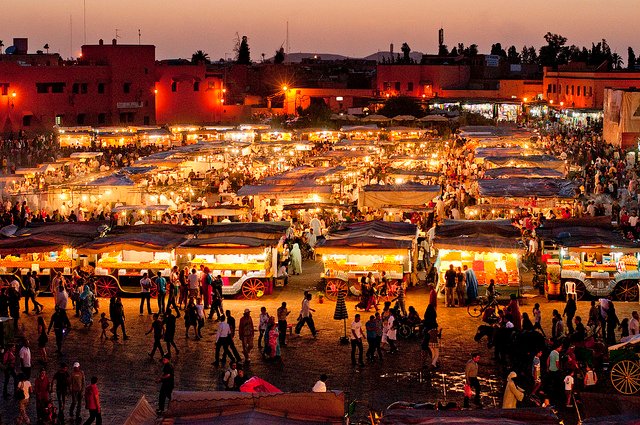
Majorelle Garden:
The Majorelle Garden in Marrakech is one of the most visited places in Morocco. It took the French painter Jacques Majorelle (1886-1962) forty years to create, with passion, this enchanting place, today in the heart of the red city.
In its shaded alleys, one strolls among the trees and exotic plants whose origin makes dream, one runs there waterways with refreshing murmur and ponds filled with water lilies and lotus; you can hear in the fragrant air here and there the rustle of the leaves and the chirping of the many birds that come to take refuge there, we stop at a bend in front of a building with Moorish charm or Art Deco style, surprisingly painted with very bright primary colors dominated by the intense blue seen in the Atlas by the artist. One is soothed and bewitched by the harmony of this luxuriant and alive picture where the senses are delicately solicited to offer a magic walk, out of the city so animated yet so close, in the enclosure protected by the high walls of ground, out time.
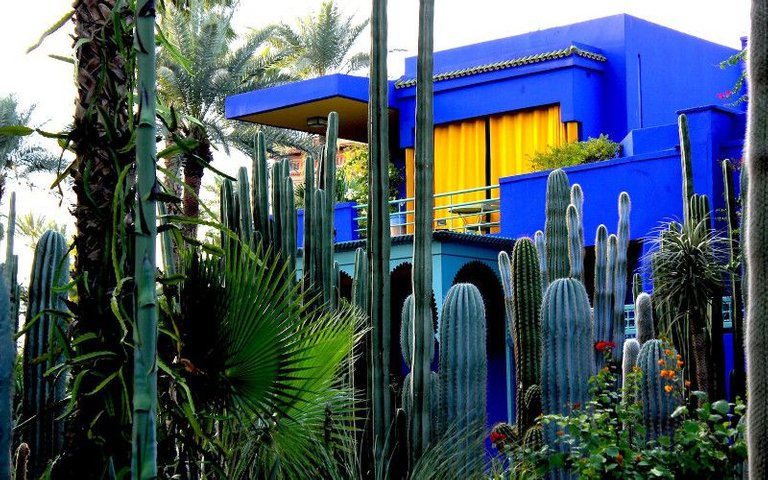
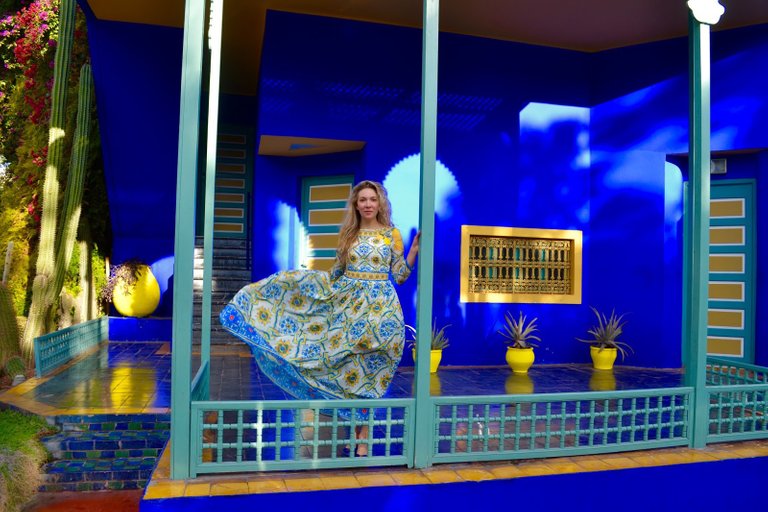
Palace of Bahia:
The palace of Bahia (palace of the beautiful, the brilliant) is a nineteenth century palace of eight hectares located in Marrakech. It is one of the masterpieces of Moroccan architecture, one of the major monuments of the country’s cultural heritage and one of the main places of tourism in Morocco.
Between 1866 and 1867 the northern part of this vast palace of 8000 m² (the largest and most luxurious palace of Morocco of its time) is built in the south-east of the medina of Marrakech, close to the current royal palace, by the Moroccan architect El Mekki. It is built for Si Moussa, chamberlain of Sultan Hassan I of Morocco.
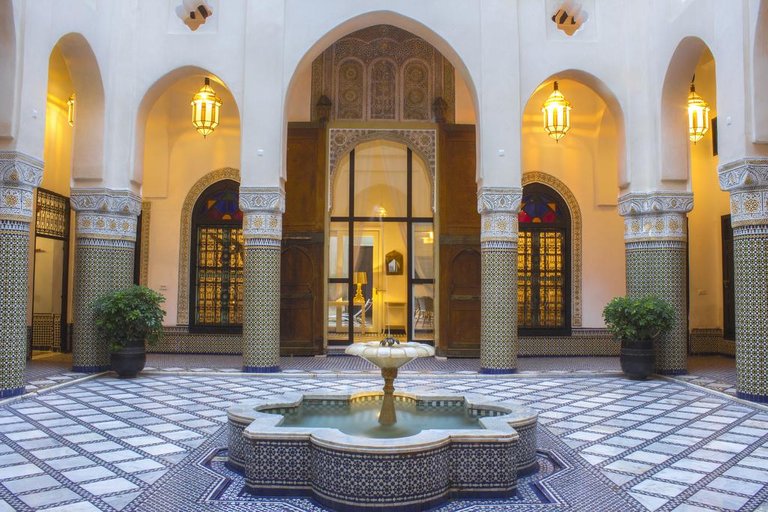
Koutoubia :
Mosque built in the 12th century, the Koutoubia is distinguished by its remarkable minaret.
Over time, the Koutoubia mosque has become emblematic of Marrakech. Its construction was decided in 1158 by the Sultan Almohades Abdel Moumen immediately after its conquest of Marrakech. Its construction was completed in 1199 with the construction of its famous minaret ordered by the Sultan's grandson, Yacoub el-Mansour. The Koutoubia, literally the "Mosque of booksellers" in Arabic, owes its name to the large number of books and manuscript merchants who set up their stalls in the immediate vicinity of the building from the 12th to 13th century.
The minaret of Koutoubia inspired the architects of the Giralda of Seville and the Hassan Tower of Rabat. This square tower of finely worked stone has a height of 77 meters, taking into account its lantern. An internal staircase gives access to rooms covered with cupolas as well as to its summit. The upper facades of the Koutoubia minaret are decorated with ceramic tiles forming different ornaments on each side.
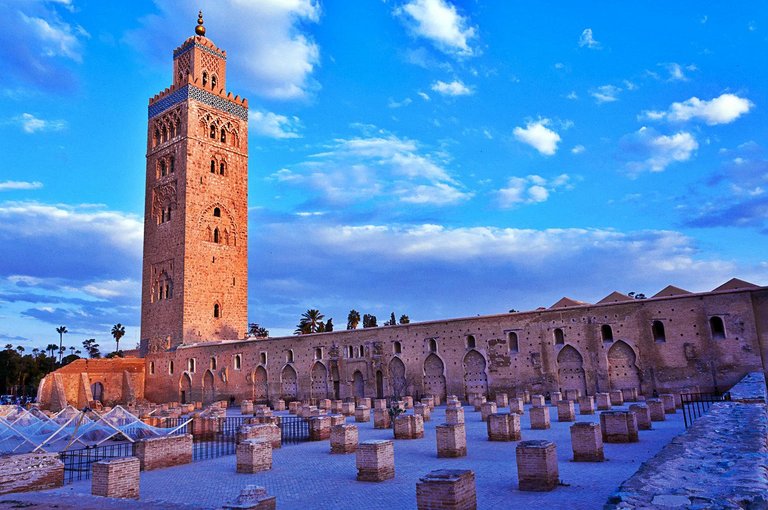
Ménara :
The Menara is a vast garden planted with olive trees built under the Almoahade dynasty about 45 minutes walk from the Jemaa el-Fna square in the center of Marrakech, Morocco. At the heart of this garden, a large pond at the foot of a pavilion serves as a reservoir of water to irrigate crops. It is a very peaceful place, away from the hustle and bustle of the city. It is therefore a privileged place for walks.
The basin is supplied with water thanks to a hydraulic system that is more than 700 years old, which carries water from the mountains located about 30 km from the city of Marrakech. This basin allows irrigation of the olive grove.
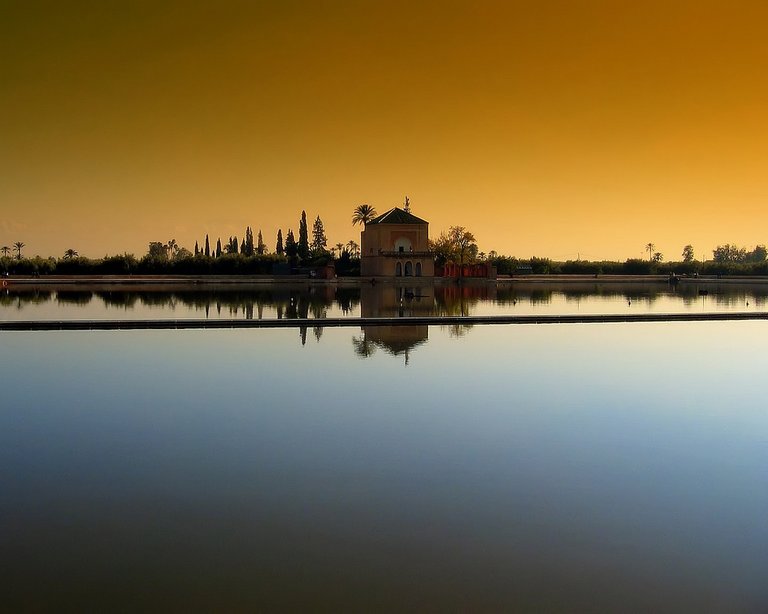
Saadian Tombs:
The Saadian tombs of Marrakech in Morocco, date from the time of the great sultan Ahmed al-Mansur Saadi (1578-1603). These tombs were discovered only around 1917, then restored by the service of the Beaux-Arts. They are richly decorated.
The mausoleum houses the bodies of some sixty Saadians, including Al-Mansour, his successors and his family. The building is composed of three rooms. The most prestigious mausoleum is the Hall of Twelve Columns. This hall houses the tomb of Sultan son Ahmed El Mansour. Its cupola is of carved cedar wood, and the stuccoes are finely worked, the burials are made of Carrara marble from Italy. This mausoleum is a very good example of Hispano-Moorish decorative art.
Outside are the graves of soldiers and servants and a garden of the necropolis.
![tombeaux-Saadiens.jpg]
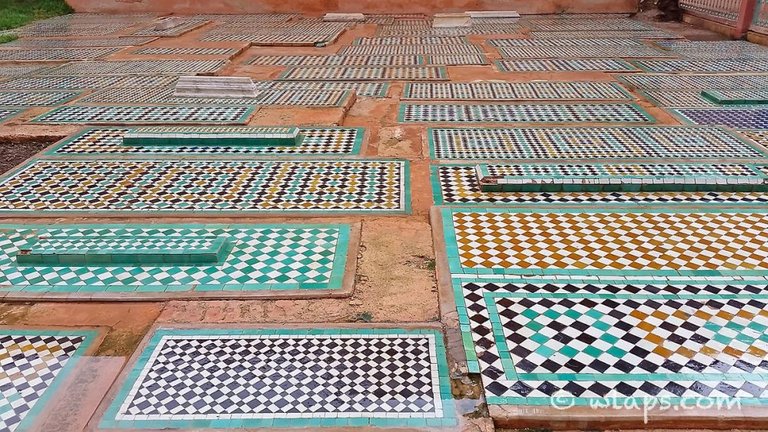 (
(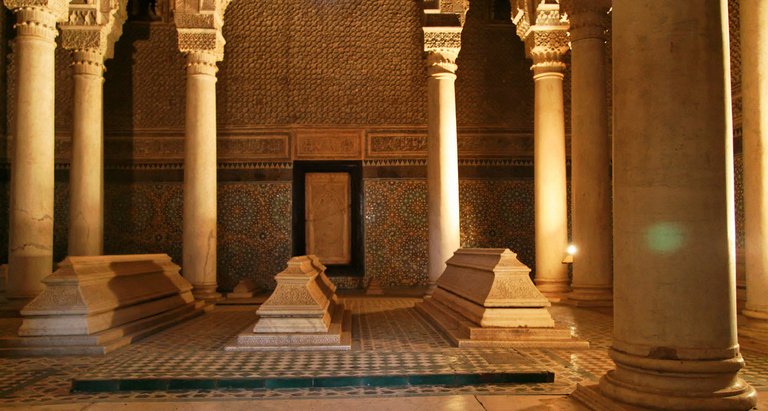 )
)
El Badi Palace:
The El Badi palace (sometimes spelled El Badiî palace or El Badia, literally “Palace of the incomparable”) is an architectural ensemble built at the end of the sixteenth century and located in Marrakech in Morocco. Former palace, it was built by the Saadian sultan Ahmed al-Mansur Dhahbi to celebrate the victory over the Portuguese army, in 1578, in the battle of the Three Kings. Today, there remains only a huge esplanade carved gardens, planted with orange trees and surrounded by high walls. Indeed, in 1696, the Alawite sultan Moulay Ismaïl took what was richest in this palace to build the imperial city of Meknes. Since 2011, the El Badi Palace has been used as a stage for the Marrakech Laughter Festival, organized by Jamel Debbouze.
The building was erected on the northeastern corner of the Kasbah, not far from the private apartments of Saadian Sultan Ahmed al-Mansur Dhahbi. The construction of the palace took place from 1578 to 1594, some works remaining however until 1603, date of the death of the sultan. Symbol of power, the palatial ensemble expressed the splendor of the sovereign both with his subjects and foreign embassies: he was the setting for solemn audiences and parties. Considered a jewel of Islamic art, its construction was influenced by the Alhambra of Granada (Spain).
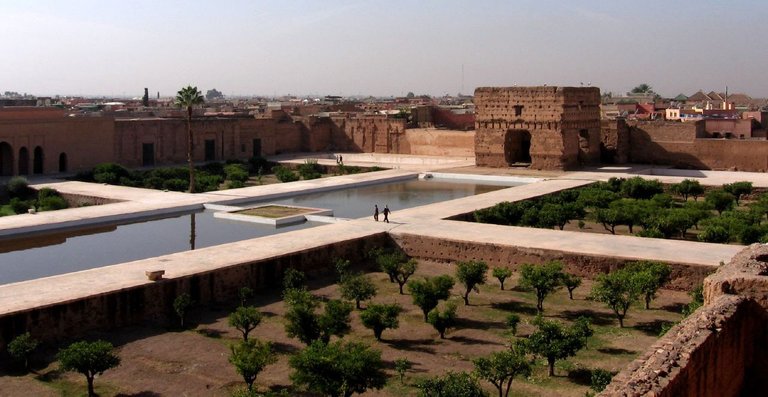
Museum of Marrakech :
The museum of Marrakech, located next to the medersa Ben Youssef, is a palace built on a plot of 2 108 m2 and has a large patio of 709 m2, typical of Moorish art, transformed into a private museum and place of art. hosting cultural activities.
This former Mnebbi palace, built in the late nineteenth century, was restored and rehabilitated as a museum by Omar Benjelloun, who was a great Moroccan collector and patron. The Marrakech Museum is funded and managed by the Omar-Benjelloun Foundation.
This museum has been organizing since 1995 only temporary exhibitions on contemporary art or Moroccan cultural heritage. On the ground floor are exhibited hammered copper objects, weapons and Berber jewelry and clothes. The objects are still used and worn in the mountains.

House of photography of Marrakech;
The House of photography of Marrakech is located in Marrakech, in the heart of the medina. It opened in April 2009 and brings together a photographic collection that spans from the 1870s to the 1950s.It is located in an old fondouk rehabilitated in cultural space. It was founded by Patrick Manac'h and Hamid Mergani, in order to present to the public old photographs taken in Morocco and to allow that the photographic memory of Morocco is also in Morocco.
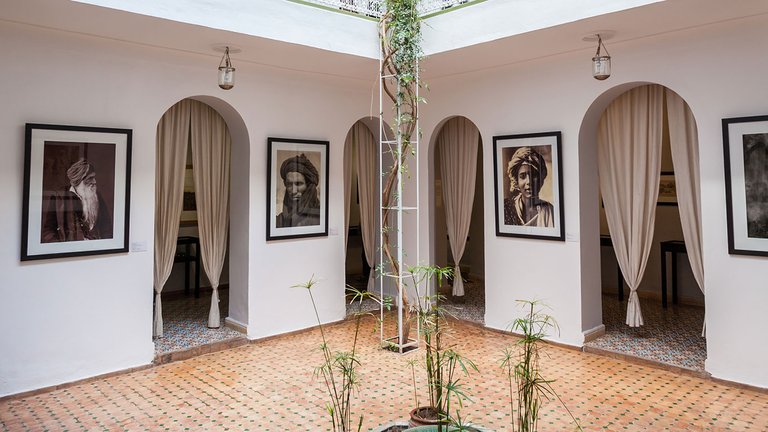
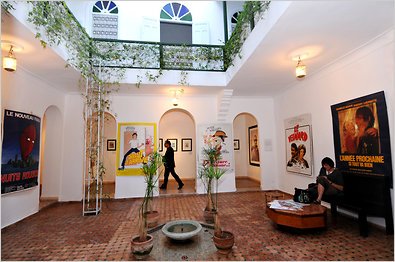
Qoubba el-Baadiyn:
Qoubba el-Baadiyn (variant: Barudiyyin) or Almoravid is a religious building in Marrakech erected in 1117 by Ali Ben Youssef1. It is the last vestige of the Almoravid dynasty.
The qoubba ("dome", variants: kuba, koubba, qoba, quba and qobba2) was the center of ablution for believers going to the mosque. The complex, in operation for several centuries, was also one of the first fountains in the city of Marrakech and ensured the supply of water to the population and its animals.
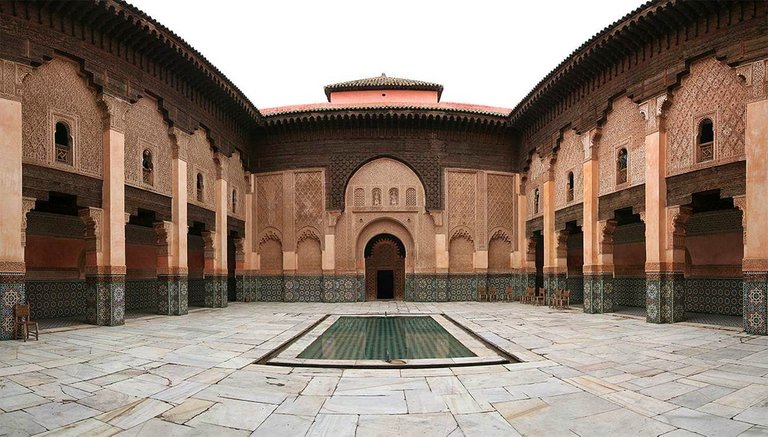
Bert-Flint Museum:
The Bert Flint Museum or sometimes known as the Tiskiwin Museum is located in Marrakech near the Bahia Palace. This museum is a former residence of Bert Flint, dating from the early twentieth century, has become a museum dedicated to Moroccan crafts since 1996.
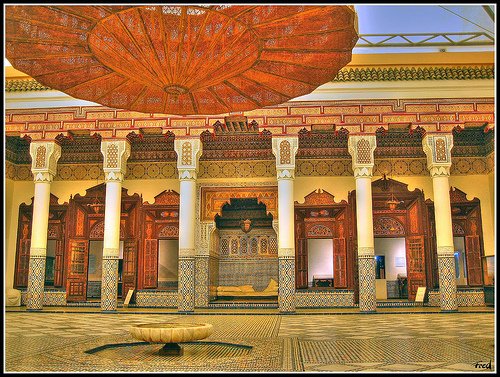
The Secret Garden:
The Secret Garden opens to the public for the first time in its history. The origins of the complex date back to the time of the Saadian dynasty more than four hundred years ago.
Rebuilt in the mid-nineteenth century by an influential Kaid of the Atlas, The Secret Garden has been home to some of the highest political figures in Morocco and Marrakech.
The Secret Garden, which can now be fully appreciated thanks to its recent restoration, is part of the great tradition of Arab-Andalusian and Moroccan palaces. The visitor can discover the gardens and the buildings that make it up, which are exceptional testimonies of Islamic art and architecture.
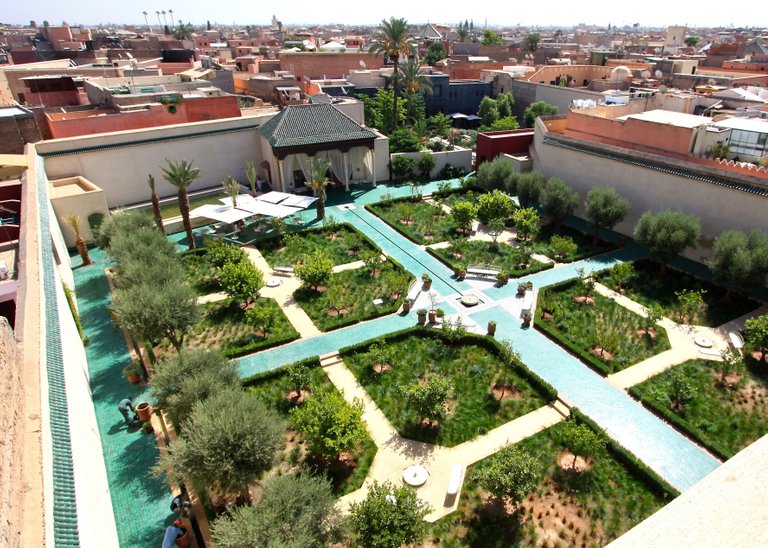
Palm grove:
hope that you enjoyed that article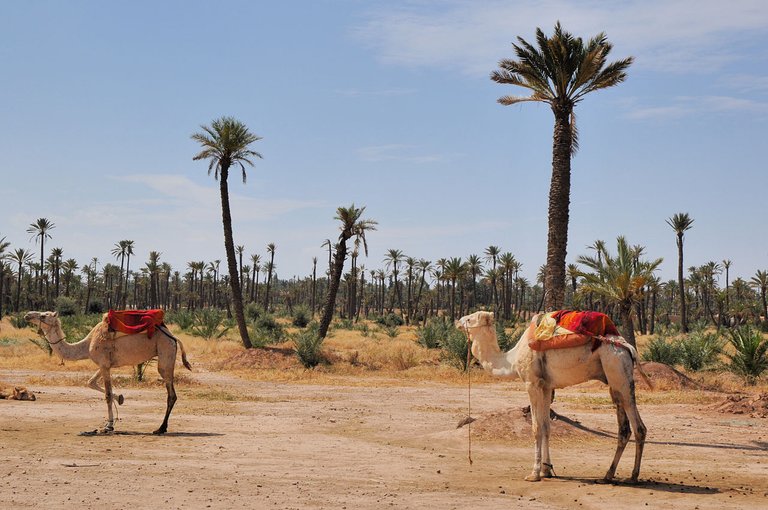
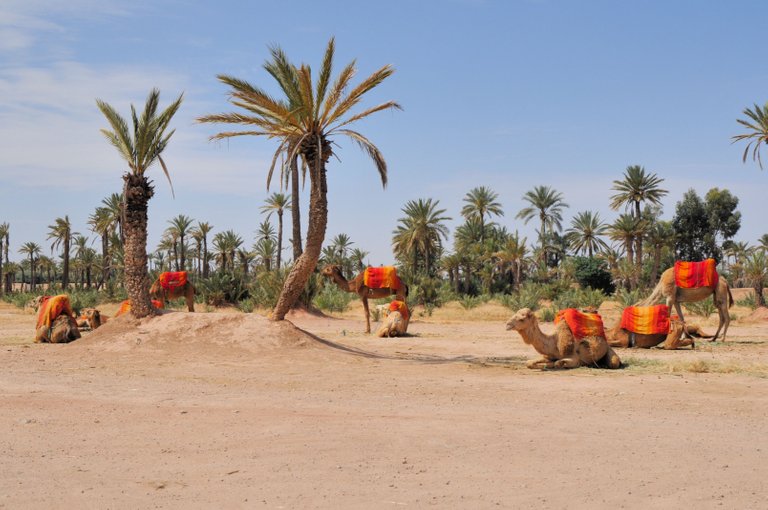
Nice Visuals
thank you